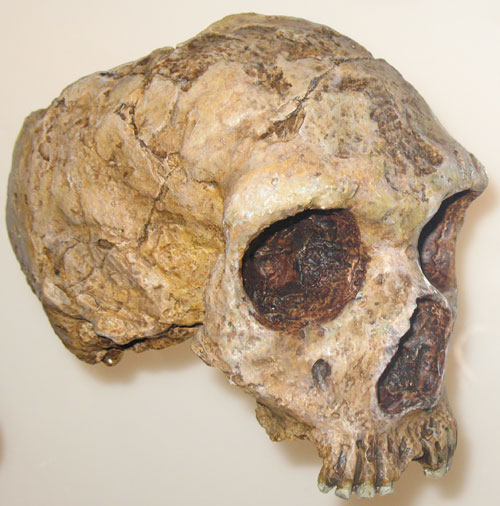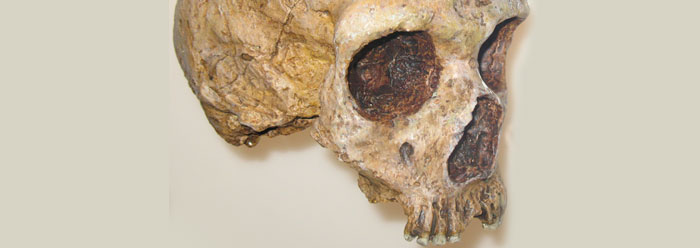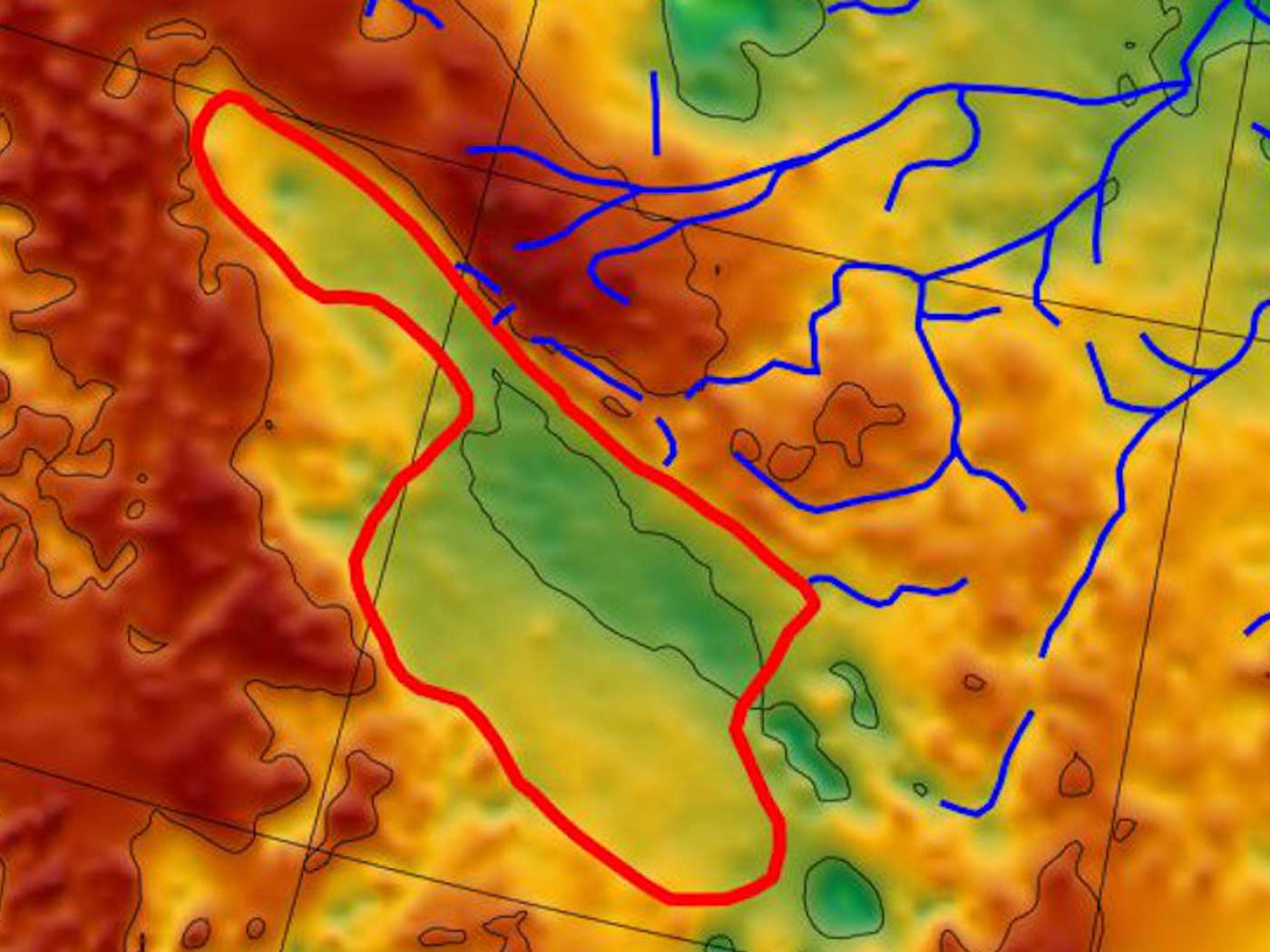The Institute for Creation Research has long identified Neandertals as fully human.1 But for decades, evolutionists had labeled this extinct variety of humankind as sub-human, alleging that they had eaten mostly meat.
A 1970 book titled Early Man illustrated a migrating Neandertal family wearing animal skins and carrying clubs. Part of the caption reads, "At left a man is carrying small game for provisions—a rabbit and a waterfowl—indicating that Neanderthalers hunted other creatures besides cave bears and woolly rhinoceroces."2 The book doesn't mention Neandertals eating plants for food or for medicine. But a recent forensic analysis of Neandertal teeth takes a bite out of this old evolutionary story.
Researchers studied tooth calculus, or tartar, from the teeth of five Neandertals found in El Sidrón Cave in North Spain. They used advanced techniques that detect trace amounts of certain chemicals. They wrote in the journal Naturwissenschaften,
By using these methods in conjunction with the extraction and analysis of plant microfossils, we have found chemical evidence consistent with wood-fire smoke, a range of cooked starchy foods, two plants known today for their medicinal qualities, and bitumen or oil shale entrapped within the dental calculus. Yet within the same calculus, chemical evidence for lipids/proteins from meat was low to absent.3
 Neandertals ate starchy foods for nutrition and plants that provided medicinal benefits, too? The study authors wrote that these ancients "had a sophisticated knowledge of their natural surroundings which included the ability to select and use certain plants."3
Neandertals ate starchy foods for nutrition and plants that provided medicinal benefits, too? The study authors wrote that these ancients "had a sophisticated knowledge of their natural surroundings which included the ability to select and use certain plants."3
Whoever suggested that Neandertals were anything less than fully human must be motivated by dogma, because decades of forensics analyses have demonstrated their humanity ad nauseum. For example, they used musical instruments and jewelry, and their DNA was fully human.4,5
Importantly, Neandertals eating starch refutes the standard excuse that evolutionists use to explain why human population burgeoned starting only about 5,000 years ago, after mankind had supposedly existed for over a hundred thousand years.6 The authors of the Naturwissenschaften study began their report with doctrinaire fare, asserting that "Neanderthals disappeared sometime between 30,000 and 24,000 years ago."3 If fully human beings have been alive for 30,000 years or more, what caused them to wait for 25,000 years before their historical population growth?
For evolutionists, calories from starch in grain were supposedly the key.7 They maintain that the earliest humans were mere hunters for ages, only recently able to farm crops and glean the calories required for population growth. The problem now is that the Neandertal peoples at El Sidrón Cave, given an evolutionary age of 50,000 years, ate grains. If these early people ate "a range of cooked, starchy foods," it is reasonable that others around the world could have also.
Fitting this evidence into biblical history instead of an ever-changing man-made history substitute is plain. Neandertal and other human populations descended ultimately from the first created man and woman who were made in the image of God, complete with the ability to make jewelry, play instruments, and "select and use certain plants" for food and medicine.
And the reason for the recent population growth is simply that it reflects the time since the Flood described in Genesis, when men began multiplying and filling the earth. No story about calories is required. And that's good, because evidence that Neandertal people ate enough starch to cause tooth tartar shows that calories were available too early to be used as an excuse for why human population growth began later than evolutionary assumptions expect.
References
- Gish, D. 1975. Man...Apes...Australopithecines...each Uniquely Different. Acts & Facts. 4 (11).
- Howell, F. C. 1970. Early Man. Morristown, NJ: Silver Burdett Company, Time Inc., 132.
- Hardy, K. et al. 2012. Neanderthal medics? Evidence for food, cooking, and medicinal plants entrapped in dental calculus. Naturwissenschaften. 99 (8) :617–626.
- Zilhão, J. et al. Symbolic use of marine shells and mineral pigments by Iberian Neandertals. Proceedings of the National Academy of Sciences. Published online before print January 11, 2010.
- Green, R. E. et al. 2010. A Draft Sequence of the Neandertal Genome. Science. 328 (5979): 710-722
- Thomas, B. 2012. A Recent Explosion of Human Diversity. Acts & Facts. 41 (9): 17.
- For example, one study said, "What, in the agricultural economy, had an impact on human biology that ultimately determined the growth of the population? The increase in natural maternal fertility, through a reduction in the birth interval, is mainly determined by the energy balance and the relative metabolic load. It implies a positive return of the postpartum energy balance, which occurred earlier in farming than in foraging societies due to the energy gain from the high-calorie food of sedentary farmers (wheat, lentils, peas, maize, rice, and millet) compared to the low-calorie food of mobile foragers (mainly game), coupled with a decrease in the energy expenditure of carrying infants. This signal is interpreted as the signature of a major demographic shift in human history and is known as the Neolithic Demographic Transition (NDT) or, synonymously, the Agricultural Demographic Transition." See Bocquet-Appel, J.-P. 2011. When the World's Population Took Off: The Springboard of the Neolithic Demographic Transition. Science. 333 (6042): 560-561.
* Mr. Thomas is Science Writer at the Institute for Creation Research.
Article posted on November 26, 2012.

























